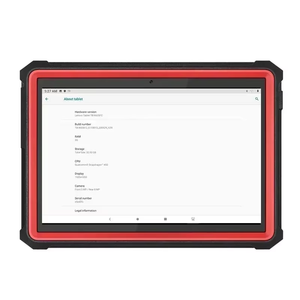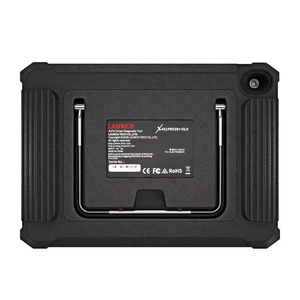
All categories
Featured selections
Trade Assurance
Buyer Central
Help Center
Get the app
Become a supplier

(7 products available)

































OBD memo scanner tools are used to access a vehicle's computer system through the OBD port. They come in different types depending on functionality and form factor. Here are some common types.
Hand-held OBD II scanners
They are the most common type of scanners. They are small, portable, and easy to use. They connect to the OBD II port and access the vehicle's data. They read and erase codes, display live data, and perform some basic tests. The functionality of handheld OBD II scanners varies. Some have advanced features, while others are basic.
Professional-grade OBD II scanners
These are advanced scanners used by automotive professionals such as mechanics and technicians. They have extensive diagnostics capabilities, enabling them to perform deep scanning, coding, programming, and special functions. They have a large color display, a user-friendly interface, and advanced data processing.
Wireless OBD II scanners
These are portable devices that connect to the OBD II port of a vehicle. They enable wireless communication between the vehicle and a smart device such as a smartphone or tablet. Users can access the vehicle's data using an app on the smart device. They read and erase diagnostic trouble codes and display live data. Some OBD II wireless scanners have Bluetooth, while others have Wi-Fi.
OBD II dongle scanners
These are small and compact devices that plug into the OBD II port and stay connected. They use Bluetooth or Wi-Fi to communicate with a mobile app, allowing users to access vehicle data in real time. Users can get diagnostic information and live data using a compatible app on a smartphone or tablet. Some OBD II dongles are used to track vehicles and monitor driving performance. Others enable users to access diagnostic information and get alerts on vehicle issues.
OBD II data loggers
These are small devices that plug into the OBD II port and connect to the vehicle's data bus. They record data on the vehicle's performance, such as speed, RPM, and fuel consumption. Some data loggers have a display that shows real-time data. Others have memory that stores data for later retrieval. OBD II data loggers help in research and development. They also help monitor driving behavior.
Regular Software Updates
Many OBD2 scanners have updateable software. Get the latest updates from the maker's website. This keeps the scanner working its best with new features and bug fixes.
Proper Care and Handling
Take good care of the scanner hardware. Keep it clean and dry. Avoid dropping or damaging it. This prevents physical problems. Electrical surges can also harm the device.
Regular Maintenance
Follow the manufacturer's maintenance tips. This may include cleaning, checking connections, and other care. Doing this keeps the scanner working well for a long time.
Use Quality Cables and Accessories
Only use the cables and add-ons that come with the scanner or are approved by the maker. Cheap knockoff ones could damage it or not work right. The real ones are tested to work properly.
Store the Scanner Properly
When not in use, keep the OBD2 scanner in a clean, dry place away from moisture and extreme heat or cold. This protects the electronics from damage over time. Avoid areas with lots of dust, moisture, or other elements that could wear out the device.
Check the Battery (if applicable)
If the OBD2 scanner has a rechargeable battery, follow the manufacturer's tips for charging and care. Over time, re-chargeable batteries lose how much they can hold a charge. Only charge as instructed to get the most life from it.
Follow Safety Precautions
Always follow the safety tips in the user's guide. This helps avoid damage to the scanner or the vehicle's computer. For example, make sure the car's ignition is in the right position before connecting or disconnecting the scanner.
There are several things to consider when choosing an OBD MEMO scanner, such as:
Vehicle Compatibility
Not all vehicles are compatible with all OBD II scanners. Check the scanner's specifications to ensure it works with the car's make, model, and year.
Ease of Use
Look for a user-friendly interface, such as an LCD screen, menu navigation, and error codes definitions. Consider the size and weight, especially if portability is a priority.
Features
consider what features are necessary. A basic OBD II scanner reads and clears DTCs and displays live data. Advanced ones have bi-directional capabilities, ABS and SRS support, and advanced graphic data.
Build Quality and Durability
Consider the scanner's build quality and durability, especially for frequent use. Look for robust construction, quality materials, and reliable connectors.
Update and Support
Check if the scanner manufacturer offers software updates and technical support. Regular updates ensure the scanner stays compatible with new vehicles and protocols.
Budget
Set a budget for the desired features and functionality. OBD II scanners vary in price, so consider the long-term benefits of a more advanced scanner.
Brand Reputation
Research the scanner's brand and read reviews from other users. A reputable brand with positive feedback is more likely to provide a reliable and effective scanner.
Warranty and Return Policy
Check the warranty and return policy of the OBD II scanner. A longer warranty and a flexible return policy offer security in choosing the right scanner for the needs.
Most MEMO scanners are easy to use and come with user manuals that guide users step by step on how to operate them. However, here are some general steps on how to use an OBD memo scanner:
1. First, plug the Memo scanner into the car's OBD-II port. The port is usually located under the dashboard, close to the driver's seat.
2. After that, turn on the car's ignition. Some scanners might need the car to be in the accessory mode, while others will just need the ignition on.
3. Next, wait for the Memo scanner to boot up. Depending on the model, it might take a few seconds.
4. Once it boots up, select the option that corresponds to what one wants to do. For instance, if the goal is to read error codes, select that option. If one wants to write a key or perform another function, navigate to that menu.
5. At this point, the scanner will communicate with the car's ECU (Engine Control Unit). This might take a few seconds, so be patient.
6. After the communication is established, either the error codes, key information, or other relevant data will be displayed on the scanner's screen. Follow any on-screen prompts or instructions that are provided.
7. If one is reading codes, take note of the codes and their descriptions. They might need to be addressed or looked up to understand what they mean.
8. In case of any changes or operations that need confirmation, follow the on-screen instructions to proceed. The scanner might prompt to confirm actions like clearing codes or writing a new key.
9. When done, unplug the Memo scanner from the OBD-II port and close the car's ignition. Make sure to turn on the ignition without starting the engine to avoid damage to some car modules.
It is that simple to use an OBD memo scanner. Remember to always check the user manual for specific instructions related to the particular model being used.
Q1. Are OBD Memo scanners worth buying?
A1. Yes, Memo scanners are worth buying. They are affordable, easy to use, and portable. It allows users to access information about the vehicle's health, which is useful for preventive maintenance.
Q2. Which is better, a Memo scanner or an OBD2 scanner?
A2. An OBD2 scanner is better than a Memo scanner. While the Memo scanner is mainly used to access the vehicle's memory and provide a few details about the health status of the vehicle, the OBD2 scanner is more advanced and can perform all the Memo scanner functions and more.
Q3. Can I use an OBD2 scanner to unlock a car?
A3. No, an OBD2 scanner cannot be used to unlock a car. The device is designed to communicate with a vehicle's computer system to perform diagnostics. It has no capability to unlock a car.
Q4. Can a Memo scanner reset the mileage?
A4. No, a Memo scanner cannot reset the mileage. It cannot perform any action that changes or alters the vehicle's data.